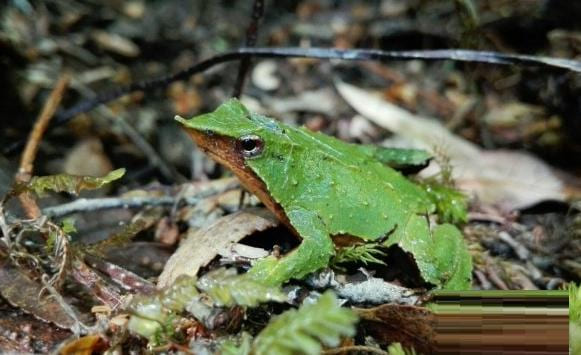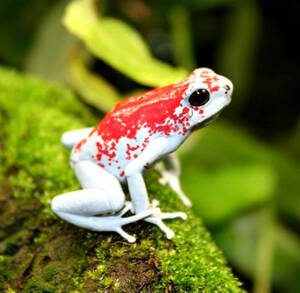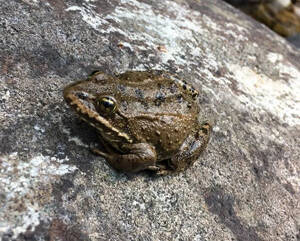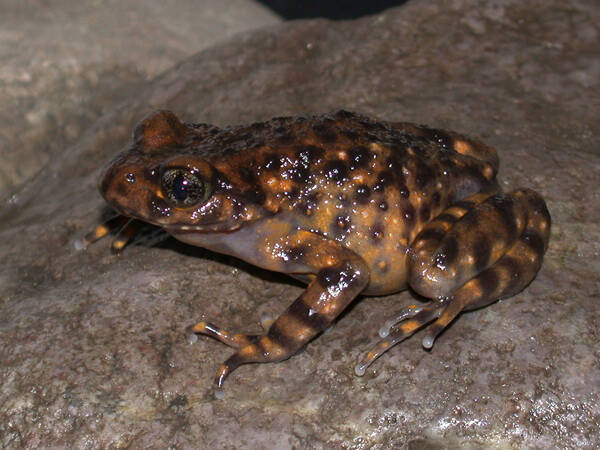Polypedates hungfuensis
IUCN
LCBasic Information
Scientific classification
- name:Polypedates hungfuensis
- Scientific Name:Hongfo tree frog
- Outline:Anura
- Family:Anura Rhacophoridae
Vital signs
- length:35-45mm
- Weight:
- lifetime:5-6years
Feature
The body is relatively flat, the eardrum is obvious, and the back is green.
Distribution and Habitat
Endemic to China, distributed in Sichuan (Dujiangyan, Wenchuan). Lives near small ponds in mountainous areas at an altitude of about 1100m. Milky white follicles can be seen near the ponds in June. Often lives on the branches and leaves of shrubs near small ponds connected to streams. Tadpoles live in still water ponds. The body length of young frogs that have just completed metamorphosis is 16mm.
Appearance
The tympanic membrane is prominent, very close to the posterior corner of the eye; there are two small groups of vomerine teeth. The back is covered with uniform small moles, not spiny; there are a few flat warts on the pharynx and chest, and the abdomen and thighs are densely covered with flat warts. The back is green with sparse milky white spots; the sides and hidden parts of the body and the finger and toe suckers are milky yellow; the ventral surface is light yellow.
Details
Hongfo tree frog is an amphibian tree frog family, with a relatively flat body, a slightly blunt snout, a nose distance slightly smaller than the eye distance, a distinct eardrum, short and sturdy forelimbs, suckers at the fingertips, deep notches on the edge of the webbed toes, a green back with sparse milky white dots, milky yellow suckers on the sides and hidden parts of the body and on the fingers and toes, and light yellow on the ventral side. The eggs are small and ivory-colored. Hongfo tree frog is commonly found in mountainous areas at an altitude of about 1,100 meters, and lives on the branches and leaves of shrubs beside small ponds connected to streams. Hongfo tree frog is a species endemic to China, distributed in Dujiangyan and Wenchuan, Sichuan.
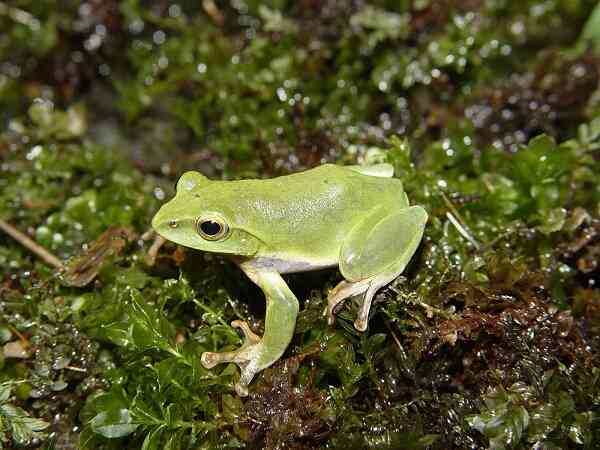
The breeding season of Hongfo tree frog is June. Hongfo tree frog lays eggs in mud nests and grasses beside still waters. The egg groups are all buried in foamy follicles. After the eggs hatch, with the liquefied follicles and the flushing of rainwater, the tadpoles fall from the tree into the pond below or flow into the pond below. The tadpoles live in still waters for about 2 to 3 months, metamorphose into young frogs, and land in the grasses to live on land.
Listed in the second level of the "List of National Key Protected Wildlife in China".

